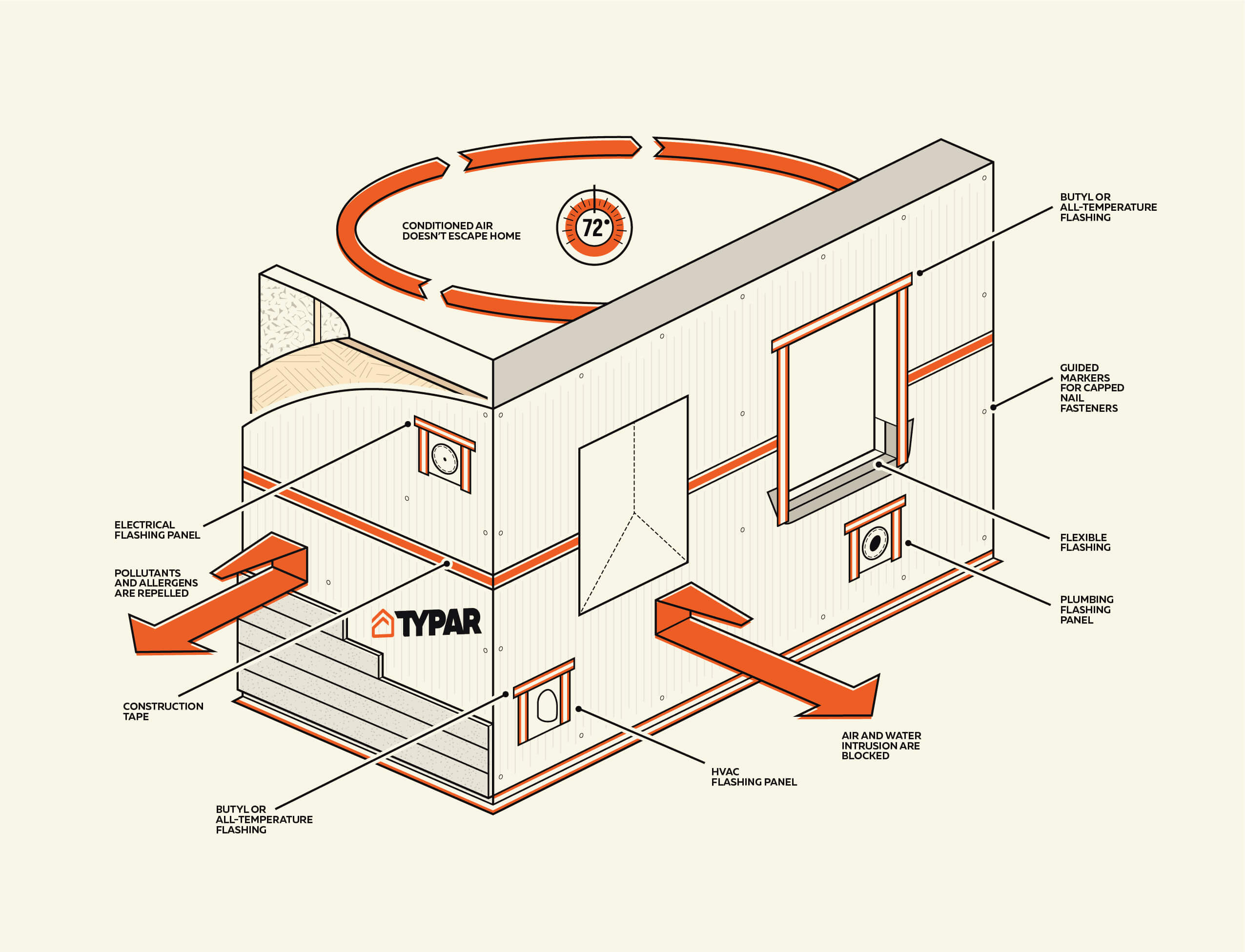
Building professionals play a critical role in ensuring a building provides a safe and healthy indoor environment for occupants. As such, indoor air quality (IAQ) and occupant comfort should be top priorities during the construction process.
Poor IAQ can lead to a range of health issues, including allergies, respiratory problems, and even more severe conditions. The U.S. Environmental Protection Agency (EPA) estimates that the economic burden of poor IAQ in the U.S. exceeds $150 billion per year, taking into account medical expenses, lost productivity and reduced quality of life. By implementing the right strategies and considering essential factors during a building’s construction, building professionals can significantly reduce the negative impacts associated with poor IAQ. Here are five key factors that impact IAQ and strategies you can take to improve occupant health.
During the construction phase, it's crucial to carefully plan and design the ventilation system to ensure adequate fresh air exchange. Work with mechanical engineers to determine the appropriate size and placement of ventilation ducts, registers and diffusers. Consider the building's occupancy and purpose to determine the necessary ventilation rates. Additionally, installing energy recovery ventilation systems can improve efficiency without compromising IAQ, as they help maintain a steady supply of fresh air while recovering thermal energy from exhaust air.
The average American is estimated to spend about 90% of their time indoors, where VOC levels can be 2 to 5 times higher than outdoor levels. Many common construction materials, such as paints, adhesives, sealants, carpets, composite wood products and insulation, release VOCs, contributing to poor indoor air quality. And studies have shown that VOC emissions from these materials can continue for months or even years after installation, depending on the product and conditions.
Building professionals should choose materials with low or no VOC emissions to minimize the release of harmful chemicals into the indoor environment. Specify the use of environmentally friendly construction products that have been tested and certified for low emissions. Certifications and labels like GREENGUARD and LEED provide criteria for low-VOC emissions in building materials, encouraging the use of products that promote better indoor air quality.
The building envelope plays a crucial role in preventing the infiltration of outdoor pollutants and controlling moisture levels. Ensure the building envelope is properly sealed and insulated to minimize air leakage and drafts. A quality building wrap (also known as a weather-resistant barrier) should cover the exterior wall completely and be properly lapped in order to shed water. Poorly installed building wrap can allow excess moisture to collect in the walls, which can lead to issues like mold and rot. This, in turn, can severely affect occupants with asthma or allergies and lead to other potential health issues.
Pay special attention to sealing gaps, cracks and joints in the building envelope to prevent the entry of pollutants and maintain optimal indoor air quality. With the TYPAR Weather Protection System, each component—including building wraps, tapes, flashings and accessories—has been manufactured and tested to work seamlessly to protect the indoor environment. It’s why we are able to offer the industry’s best warranty. A TYPAR building wrap can also help your project qualify for LEED credits.
Excessive moisture can lead to mold growth, compromising IAQ and occupant health. It’s important to implement effective moisture management strategies during construction, such as installing a quality building wrap or vapor barrier as a protective layer against moisture intrusion. Choose materials with high moisture resistance and vapor permeability to allow moisture to escape while preventing its entry into the building envelope. Building scientist Joseph Lstiburek advises builders to aim for 10-20 perms when specifying a building wrap, as this “sweet spot” achieves the desired balance of moisture protection and breathability.
The latest advances in building wraps include products like TYPAR DrainableWrap™ Commercial, our first drainable building wrap engineered to protect multi-story structures from the elements and manage excess moisture. Our patented meltshot technology adds an integrated layer of polypropylene fibers to create a drainage gap between the wrap and exterior sheathing, achieving 96.7% drainage efficiency in channeling wind-driven rain and bulk water away from the structure.
Maintaining a clean and organized construction site goes a long way toward preventing the accumulation of dust, debris and construction-related pollutants that can negatively affect IAQ. Regularly clean and vacuum the site, especially during demolition and construction phases. Properly store construction materials to minimize their impact on IAQ. Implement dust control measures such as using dust barriers, wetting surfaces, and employing high-efficiency particulate air (HEPA) filtered equipment to minimize airborne contaminants.
As a building professional, prioritizing indoor air quality and occupant comfort is essential. By considering these strategies, you can significantly contribute to improving IAQ and occupant well-being. Contact your TYPAR rep and let us help you design a high-performance building envelope that will contribute to the long-term satisfaction and health of the building occupants.